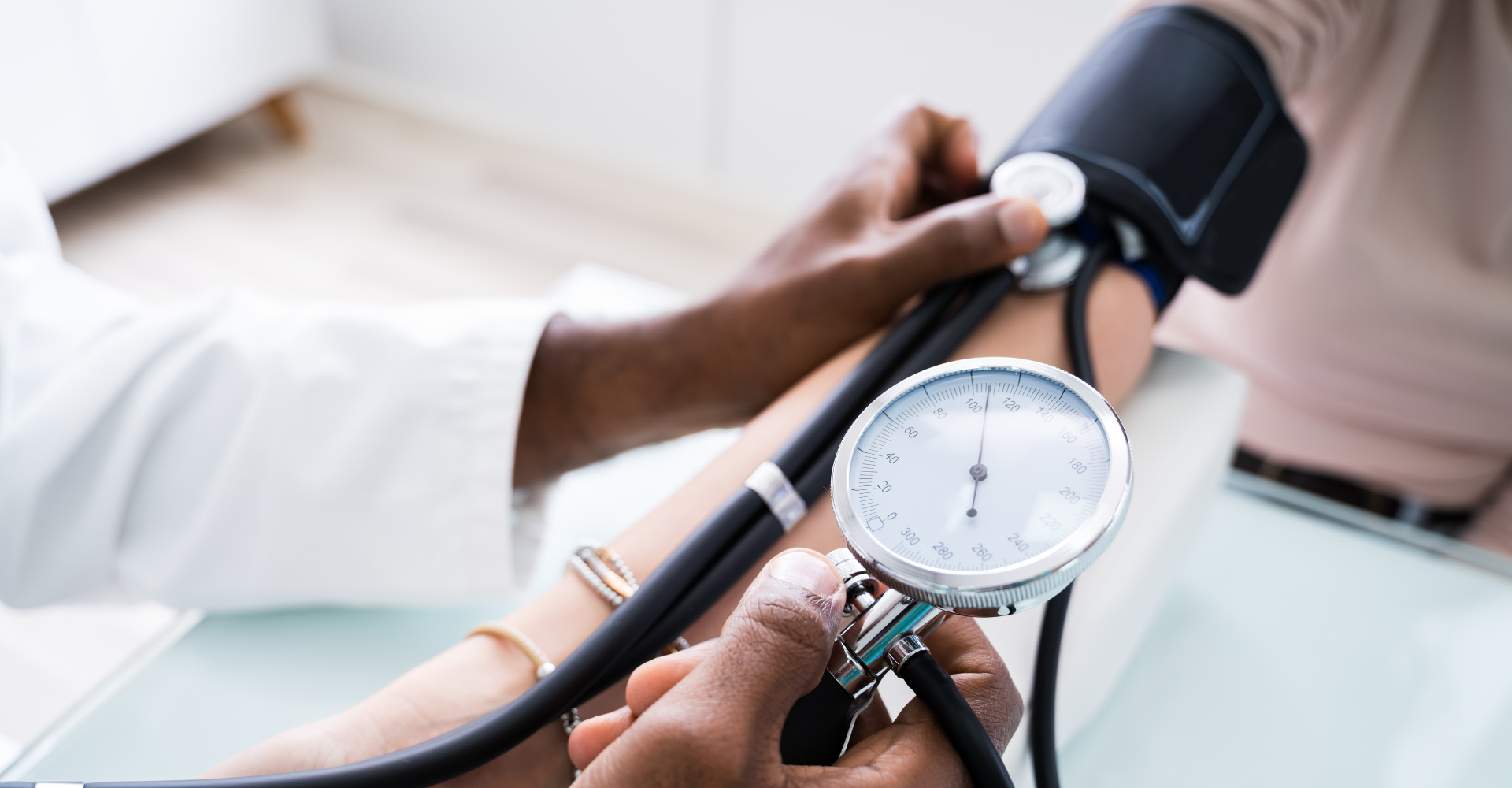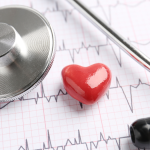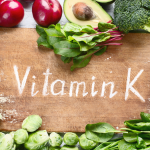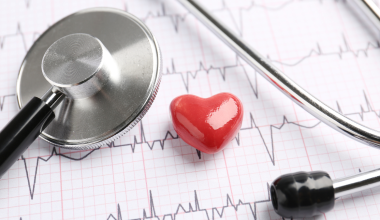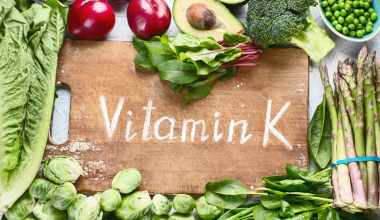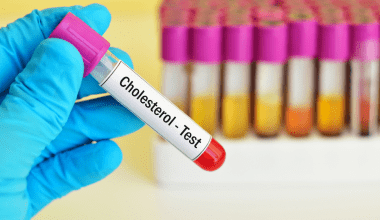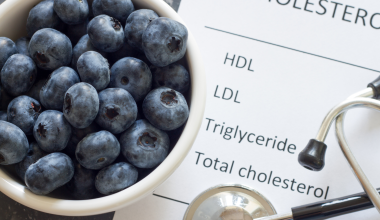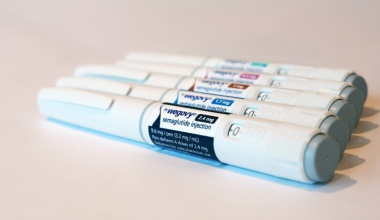High blood pressure (hypertension) is called “The Silent Killer” for a reason: Most people with it experience no noticeable symptoms. Despite the lack of symptoms, high blood pressure (hypertension) can silently damage blood vessels, increasing the risk of serious health problems like heart disease and stroke.
Hypertension is a significant health concern in Canada, affecting approximately 23% of adults aged 20 to 79. This prevalence increases with age, reaching about 70% among individuals aged 70 to 79.
While people who are overweight or living with obesity are more than two times as likely to have hypertension, weight isn’t the only factor influencing blood pressure levels. Hypertension is complex. Genetics, family history, high sodium intake, excessive alcohol consumption, lack of physical activity, stress, certain medications, underlying medical conditions like sleep apnea or thyroid issues, and sometimes even just the natural aging process can contribute to the development of the condition.
Even for the 30 to 50 per cent of people with heritable hypertension who are not overweight, lifestyle modifications have been shown to effectively reduce blood pressure. And in some cases, it may decrease the need for medication.
Since overweight and obesity are a major cause of high blood pressure, it’s no surprise that a diet targeting weight reduction has been shown to be effective. It is also important to consume a low-sodium, low-processed food diet if you have hypertension, even if you are not overweight. This is because when you consume too much sodium, your body holds onto water to dilute it, leading to increased blood volume and higher blood pressure.
Equally important to diet are consistent exercise and other lifestyle approaches found below.
The DASH Diet
The most common dietary change recommended for hypertension is the DASH (Dietary Approaches to Stop Hypertension) diet. Studies have also found the DASH diet to be one of the best strategies to help prevent heart disease, stroke, diabetes and even some forms of cancer. Research also shows the DASH plan is safe and effective for short-term and permanent weight loss.
Developed by a team of over 160 health care professionals and researchers, the DASH diet is effective and easy to follow because it does not restrict entire food groups. Here’s what you should aim to eat on the daily to reduce hypertension.
To reduce the amount of sodium and processed foods in your diet, and to lose excess weight, try these steps:
- Choose fresh or frozen vegetables
- Use fresh poultry, fish or meat instead of canned, smoked or processed preparations.
- Limit or cut out cured foods such as bacon and ham, foods packed in brine, and condiments.
- Cook rice or pasta without salt.
- Cut frozen dinners, packaged mixes, and canned soups or broths from your diet.
- Rinse canned foods such as tuna and canned beans to remove some of the salt.
- Use spices and herbs instead of salt to season foods.
- Add fruit to your breakfast or have it as a snack or after dinner dessert with low-fat yogourt.
- Treat meat as part of the whole meal, instead of the main focus.
- Avoid salty, fatty snacks like chips, crackers and processed cookies.
Some days you might indulge in salty processed foods or fewer foods from one group than the plan suggests. But don’t worry, nobody is perfect. Awareness is the first step. Just try your best to keep the average on most days close to the DASH plan levels.
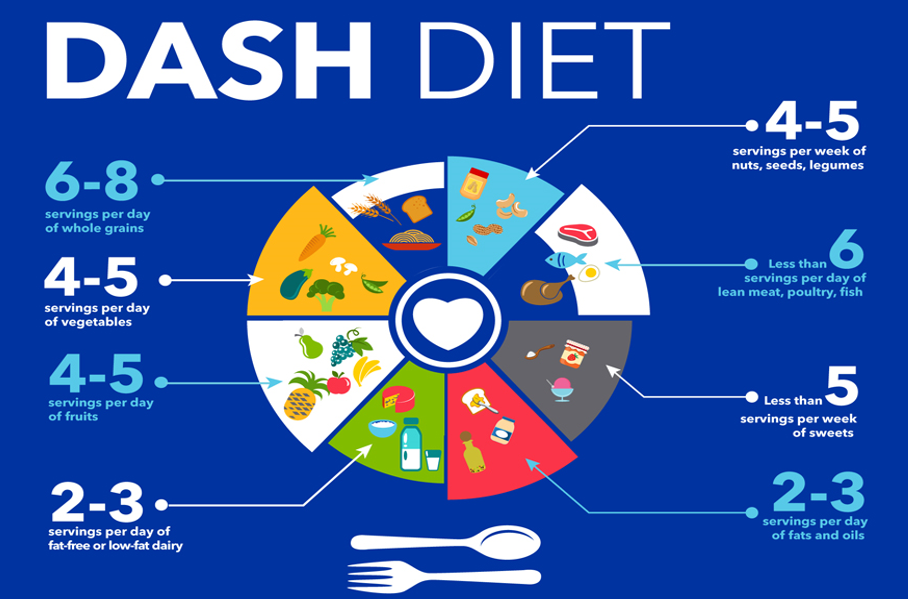
It’s not easy to envision what “serving” means when it comes to actually consuming your food. Based on eating about 2,000 calories a day, here are some basic guidelines:
6-8 daily servings of whole grains. A serving size is about one slice of bread, 40 grams of oatmeal, or 1/4 of a cup of uncooked quinoa.
4-5 daily servings of vegetables. A serving size is about 1 cup of raw, leafy vegetables or a 1/2 cup of cut-up raw or cooked vegetables. Also look to your leafy greens and tomatoes for added dietary potassium.
4-5 daily servings of fruits. A serving size is about one medium fruit; 1/4 cup of dried fruit; 1/2 cup of fresh, frozen or canned fruit; or 1/2 cup of real fruit juice. Reach for potassium-rich fruits such as bananas.
2-3 daily servings of fat-free or low-fat dairy. A serving size is about 1 cup of milk or yogourt or 42 grams of cheese.
Up to 6 servings of lean meat, poultry, fish. A serving size is about 28 grams of cooked meat, poultry, or fish, or one egg.
4-5 servings per week of nuts, seeds, legumes: A serving size is about 1/3 cup or 78 grams of nuts, 2 tablespoons of peanut butter, 2 tablespoons or 14 grams of seeds, 1/2 cup of cooked, dry beans or peas.
2-3 daily servings of fats and oils: A serving size is about 1 teaspoon of butter, 1 teaspoon of olive oil, or 1 tablespoon of mayonnaise
Maximum 5 servings per week of sweets: A serving size is about 1 tablespoon of sugar, 1 tablespoon of jelly or jam, 1/2 cup of sorbet or gelatin or 1 cup of lemonade.
Exercise and Lifestyle Changes to Reduce Blood Pressure
Regular physical exercise can effectively lower blood pressure, with studies showing that moderate aerobic activity can reduce blood pressure by 5-8 mmHg on average, making it a valuable tool for managing hypertension without medication.
Aerobic activities like walking, swimming and cycling, along with resistance training can contribute to lowering blood pressure. Exercise and diet will help those who are overweight achieve their target weight, thereby reducing the strain on the heart.
Drinking too much alcohol can raise blood pressure. Health Canada is one of the first governments to recommend as little alcohol as possible for your health, and others around you.
Reducing stress is an important way to both avoid and lower high blood pressure. Stress can cause your blood pressure to rise temporarily, however, if acute stress carries on for months, even years, it can become chronic, which can potentially lead to high blood pressure.
Exercise is an important way to reduce stress along with mindfulness, meditation, and controlled breathing exercises.
Blood Pressure Reducing Foods
The top 5 foods that have been shown in studies to reduce blood pressure are beetroot juice, dark chocolate, green or black tea, flaxseed, omega-3 fatty fishes, walnuts and kiwi fruits. Watch the video below for details.
Additionally, potassium-rich foods can help reduce blood pressure. Watch the video below for more information on why and which foods contain significant potassium.
For Canadians managing hypertension, there are several trusted resources that provide guidelines, tools, and support for prevention, diagnosis, and treatment. Here are some of the best ones:
Hypertension Canada is the leading Canadian organization for high blood pressure awareness, treatment, and prevention. Offers clinical guidelines, risk assessments, and patient education. Provides a Blood Pressure Action Plan and tips on lifestyle changes.
Heart & Stroke Foundation of Canada offers comprehensive information on heart health, including hypertension management. Free resources on diet, exercise, and medication adherence. Online risk assessment tools and guides for lowering blood pressure.
Pharmacist & Telemedicine Services: Many pharmacies offer free blood pressure monitoring and advice. These include Shoppers Drug Mart, Rexall, Guardian, and others. Virtual care options like Maple and TELUS Health Virtual Care provide teleconsultations with doctors about medication management.
Dietitians of Canada offers nutrition tips for blood pressure control.
It’s essential for you to work closely with your healthcare provider when considering lifestyle changes, especially if you are already on blood pressure medications. In some cases, successful lifestyle interventions may mean not starting to take meds or allow for a reduction or discontinuation of medication under medical supervision.
Making lifestyle modifications to help control blood pressure should be a no-brainer. Not only will you help yourself maintain a healthy blood pressure, but exercising, eating better, stressing less and avoiding alcohol will help many other aspects of your physical and mental health.
It certainly can’t hurt to eat better and commit to exercise so let us know in the comments below – have you found that lifestyle changes have helped you lower your blood pressure?
~Read more from The Health Insider~
- Eat Your Way to a Healthier Heart with a Metabolic CoachFrom balancing blood sugar to reducing inflammation, Certified Metabolic Coaches help you use food as medicine for your heart and overall wellbeing.
- Free Online Tool Reveals Your Heart and Stroke Risks: Don’t Wait for a Wake-Up CallMost Canadians worry about heart and brain health. Heart & Stroke’s new Risk Screen helps assess personal risks and take action.
- Vitamin K2: Your Ally to Combat Bone LossFrom bone density to heart health, vitamin K2 plays a powerful role. See why the MK-7 form of the vitamin leads the way.
The information provided on TheHealthInsider.ca is for educational purposes only and does not substitute for professional medical advice. TheHealthInsider.ca advises consulting a medical professional or healthcare provider when seeking medical advice, diagnoses, or treatment. To read about our editorial review process click here.

